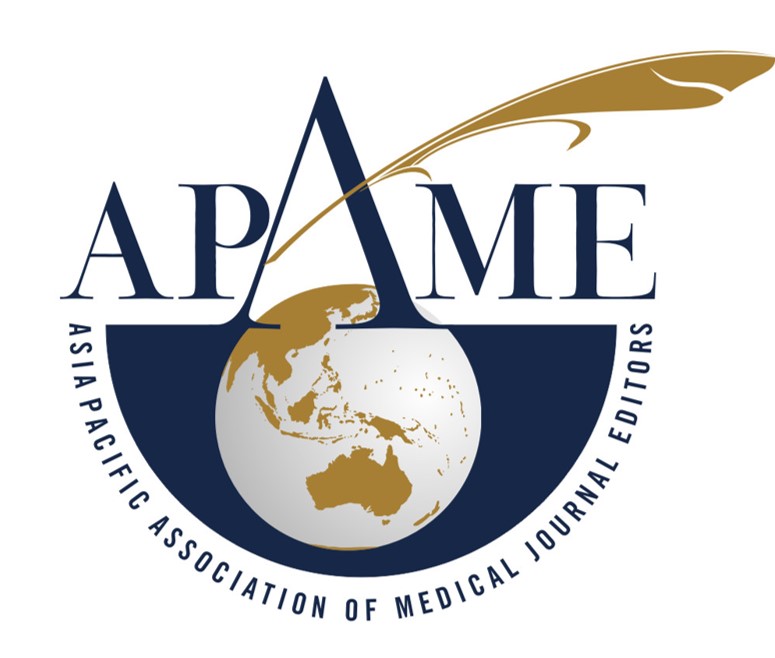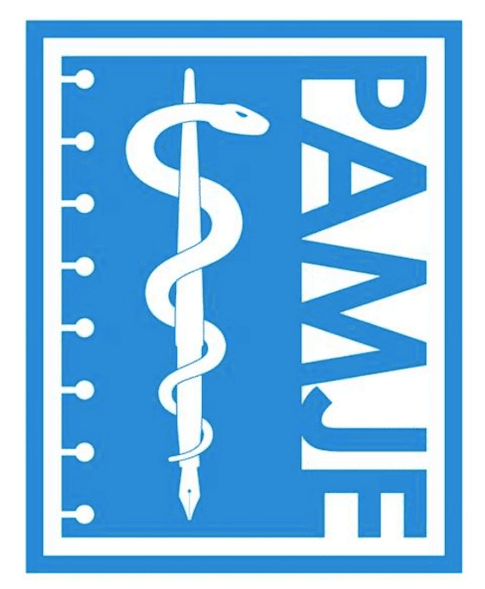Staff Nurses’ Perception of the Hemodialysis Unit as Practice Environment and Patients’ Perception of Nurse Caring Behaviors and their Level of Satisfaction
Abstract
Background: Despite the concomitant rise of kidney diseases and hemodialysis services nationwide, the Philippines still lacks research on hemodialysis nursing care quality. Using nursing-sensitive indicators under the Nursing Role Effectiveness Model, this study aimed to describe hemodialysis nurses’ perception of their unit as practice environment; patients’ perception of nurse caring behaviors based on Jean Watson’s 10 Caritas Processes; patients’ level of satisfaction on nursing care; and determine the association between perceived nurse caring behaviors and satisfaction levels.
Methodology: This descriptive cross-sectional study purposely selected seven free-standing hemodialysis centers in Metro Manila. Ninety-four nurses were surveyed via complete enumeration using the Practice Environment Scale of Nursing Work Index (PES-NWI) while 345 randomly selected patients answered the Caring Factor Survey-Tagalog (CFS-T) and Patient Satisfaction of Nursing Care Quality Questionnaire-Tagalog (PSNCQQ-T). Pearson’s correlation was used to analyze the gathered data.
Results: The study revealed that nurses perceived their respective work unit as a favorable practice environment while hemodialysis patients perceived nurse caring behaviors as practiced to a great extent and their satisfaction with nursing care as very good. The study also revealed a significant positive correlation between the process and outcome indicators (r=0.64, p=<0.0001).
Conclusion: The study reflected positive nursing-sensitive indicators in hemodialysis. However, hemodi alysis facilities should improve nurse staffing, spiritual nurse caring behavior, and facilitate a more healing environment while maintaining their current favorable qualities.
Downloads
References
Aiken, L. H., Clarke, S. P., Sloane, D. M., Lake, E. T., & Cheney, T. (2008). Effects of hospital care environment on patient mortality and nurse outcomes. Journal of Nursing Administration, 38(5), 223-229. https://doi.org/10.1097/01.NNA.0000312773.42352.d7
Anquillano-Carsola, F., & Castro-Palaganas, E. (2016). Nursing, nightingale, and beyond: Voices, dialogues, and talks of the future. Philippine Journal of Nursing, 2(2), 11-23.
Ashker, V. E., Penprase, B., & Salman, A. (2012). Work-related emotional stressors and coping strategies that affect the well-being of nurses working in hemodialysis units. Journal of Nephrology Nursing, 39(3), 231-236.
Barandino, J. P. & Soriano, G. (2019). Practice environment and work-related quality of life among nurses in a selected hospital in Zamboanga, Philippines: A correlational study. Nursing Practice Today, 6(4), 223-228. https://doi.org/10.18502/npt.v6i4.1944
Bayoumi, M., Hoda, A., Guindy, E., & Ahmed, A. (2016). Patients' satisfaction with care at the dialysis unit. International Journal of Nursing Science, 6(5), 117-122. https://doi.org/10.5923/j.nursing.20160605.02
Burston, S., Chaboyer, W., & Gillespie, B. (2013). Nurse-sensitive indicators suitable to reflect nursing care quality: A review and discussion of issues. Journal of Clinical Nursing, 23(13-14), 269-273. https://doi.org/10.1111/jocn.12337
Calong Calong, K. & Soriano, G. (2018). Caring Behavior and Patient Satisfaction: Merging for Satisfaction. International Journal of Caring Sciences, 11(2), 697-703
Devkaran, S. (2014). Patient experience is not patient satisfaction: Understanding the fundamental differences. https://bit.ly/30uplsd
DiNapoli, P., Nelson, J., Turkel, M., & Watson, J. (2010). Measuring the Caritas processes: Caring Factor Survey. International Journal for Human Caring, 14(3), 15-20.
Doran, D. I. (2002). Development of the Nursing Role Effectiveness Model. Retrieved from Nursing Role Effectiveness Model: Conceptualizing to theory testing. http://stti.confex.com/stti/sos13/techprogram/paper_11238.htm
Doran, D., Sidani, S., Keatings, M., & Doidge, D. (2002). An empirical test of the Nursing Role Effectiveness Model. Journal of Advanced Nursing, 38(1), 29-39. https://doi.org/10.1046/j.1365-2648.2002.02143.x
Ferentinou, E., Giannakopoulou, M., Prezerakos, P., Sachlas, A., Theofilou, P., & Zyga, S. (2016). Measuring beliefs and satisfaction regarding nursing care among Greek patients on hemodialysis. Journal on Behavioral Health, 5, 117-122.
Gardner, J. K., Thomas-Hawkins, C., Fogg, L., & Latham, C. E. (2007). The relationships between nurses' perceptions of the hemodialysis unit work environment and nurse turnover, patient satisfaction, and hospitalizations. Journal of Nephrology Nursing, 34(3), 271-281.
Gomez, N. J., Castner, D., & Dennison, H. A. (2011). Incorporating the nephrology nursing scope and standards of practice into clinical practice. Journal of Nephrology Nursing, 311-317.
Hayes, B., Bonner, A., & Douglas, C. (2015). Haemodialysis work environment contributors to job satisfaction and stress: A sequential mixed-methods study. BioMed Central, 14(58), 1-13. https://doi.org/10.1186/s12912-015-0110-x
Heslop, L., & Lu, S. (2014). Nursing-sensitive indicators: A concept analysis. Journal of Advanced Nursing, 70(11), 2469-2482. https://doi.org/10.1111/jan.12503
Irvine, D., Sidani, S., & Hall, L. M. (1998). Linking outcomes to nurses' roles in health care. Nursing Economics, 16(2), 58-64.
Komisyon sa Wikang Filipino. (1991). Tungkol sa KWF. http://kwf.gov.ph/tungkol-sa-kwf/
Lake, E. T. (2002). Development of the Practice Environment Scale of the Nursing Work Index. Research in Nursing & Health, 25, 176-188. https://doi.org/10.1002/nur.10032
Lake, E. T., & Friese, C. R. (2006). Variations in nursing practice environments. Nursing Research, 55(1), 1-9. https://doi.org/10.1097/00006199-200601000-00001
Lashinger, H., McGillis Hall, L., Pedersen, C., & Almost, J. (2005). A psychometric analysis of the Patient Satisfaction with Nursing Care Quality Questionnaire: An actionable approach to measuring patient satisfaction. Journal of Nursing Care Quality, 20(3), 220-230. https://doi.org/10.1097/00001786-200507000-00006
LaVela, S., & Gallan, A. (2014). Evaluation and measurement of patient experience. Patient Experience Journal, 1(1), 28-36. https://doi.org/10.35680/2372-0247.1003
Leger, P., Sramek, D., Conklin, S., & Nelson, J. (2012). Patient and nurse perception of the individual caring relationship. In J. Nelson, & J. Watson, Measuring caring: International research on caritas as healing(pp. 87-96). Springer Publishing Company.
Musa, A. S., Pevalin, D. J., & Khalaileh, M. A. (2017). Spiritual well-being, depression, and stress among hemodialysis patients in Jordan. Journal of Holistic Nursing, 36(4), 354-365. https://doi.org/10.1177/0898010117736686
Nelson, J., & Watson, J. (2011). Measuring caring: International research on caritas as healing. Springer Publishing Company.
Palmer, S., de Berardis, G., Craig, J., Tong, A., Tonelli, M., Pellegrini, F., Ruospo, M., Hegbrant, J., Wollheim, C., Celia, E., Gelfman, R., Ferrari, J., Torok, M., Murgo, M., Leal, M., Bednarek-Skublewska, A., Dulawa, J., & Strippoli, G. (2014). Patient satisfaction with in-centre haemodialysis care: An international survey. British Medical Journal Open, 4(5). https://doi.org/10.1136/bmjopen-2014-005020
Pearson, A., Durant, I., & Punton, S. (1989). Determining quality in a unit where nursing is the primary intervention. Journal of Advanced Nursing, 14(4), 269-273. https://doi.org/10.1111/j.1365-2648.1989.tb03413.x
Persky, G., Felgen, J., & Nelson, J. (2011a). Measuring caring in primary nursing. In J. Nelson, & J. Watson, Measuring caring. Springer Publishing Company, LLC.
Persky, G., Nelson, J., Watson, J., & Bent, K. (2011b). Profile of a nurse effective in caring. In J. Nelson, & J. Watson, Measuring caring: International research on caritas as healing. Springer Publishing Company, LLC.
PhilHealth. (2017). 2016 Stats & Charts. https://www.philhealth.gov.ph/about_us/statsncharts/snc2016.pdf
Philippines News Agency. (2019). ARQ Capital boosts bid to set up more dialysis centers in PH. https://www.pna.gov.ph/articles/1086669
Prestes, F., Beck, C., Magnago, T., da Silva, R., & Tavares, J. (2015). Working context in a hemodialysis service: Evaluation of nursing staff. Text Context Nursing, 24(3), 637-645. https://doi.org/10.1590/0104-07072015000220014
Richardson, M., Paine, S., Grobert, M., Stidley, C., Gabbay, E., Harford, A., Zager, P., Miskulin, D., Meyer, K. (2015). Satisfaction with care of patients on hemodialysis. Clinical Journal of the American Society of Nephrology, 10(8), 1428-1434. https://doi.org/10.2215/CJIN.11241114
Ross, J., Jones, J., Callaghan, P., Eales, S., & Ashman, N. (2009). A survey of stress, job satisfaction and burnout among hemodialysis staff. Journal of Renal Care, 35(3), 127-133. https://doi.org/10.1111/j.1755-6686.2009.00102.x
Shnishil, A. T., & Mansour, K. A. (2013). Assessment of patients' satisfaction toward nursing care at hemodialysis units. Iraqi National Journal of Nursing Specialties, 26(1), 1-9.Sidani, S., Doran, D., &Mitchell, P. (2004). A theory-driven approach to evaluating quality of nursing care. Journal of Nursing Scholarship, 36(1), 60-65. https://doi.org/10.1111/j.1547-5069.2004.04014.x
Stavropoulou, A., Grammatikopoulou, M., Rovithis, M., Kyriakidi, K., Pylarinou, A., & Markaki, A. (2017). Through the patients' eyes: The experience of end-stage renal disease patients concerning the provided nursing care. MDPI -Healthcare, 5(36), 1-11.https://doi.org/10.3390/healthcare5030036
Thomas-Hawkins, C., Denno, M., Currier, H., & Wick, G. (2003). Staff nurses' perceptions of the work environment in freestanding hemodialysis facilities. Nephrology Nursing Journal, 3(2), 169-178.
Thomas-Hawkins, C., Flynn, L., & Clarke, S. (2008). Relationships between registered nurse staffing, processes of nursing care, and nurse-reported patient outcomes in chronic hemodialysis units. Journal of Nephrology Nursing, 35(2), 123-131.
United States Renal Data System. (2016). Chapter 13: International comparisons. https://www.usrds.org/2016/view/v2_13.aspx
Watson, J. (2006). Caring Theory as an ethical guide to administrative and clinical practices. Nursing Administration Quarterly, 30(1), 48-55. https://doi.org/10.1097/00006216-200601000-00008
Copyright (c) 2020 Journal of Health and Caring Sciences

This work is licensed under a Creative Commons Attribution-NonCommercial 4.0 International License.


.png)





